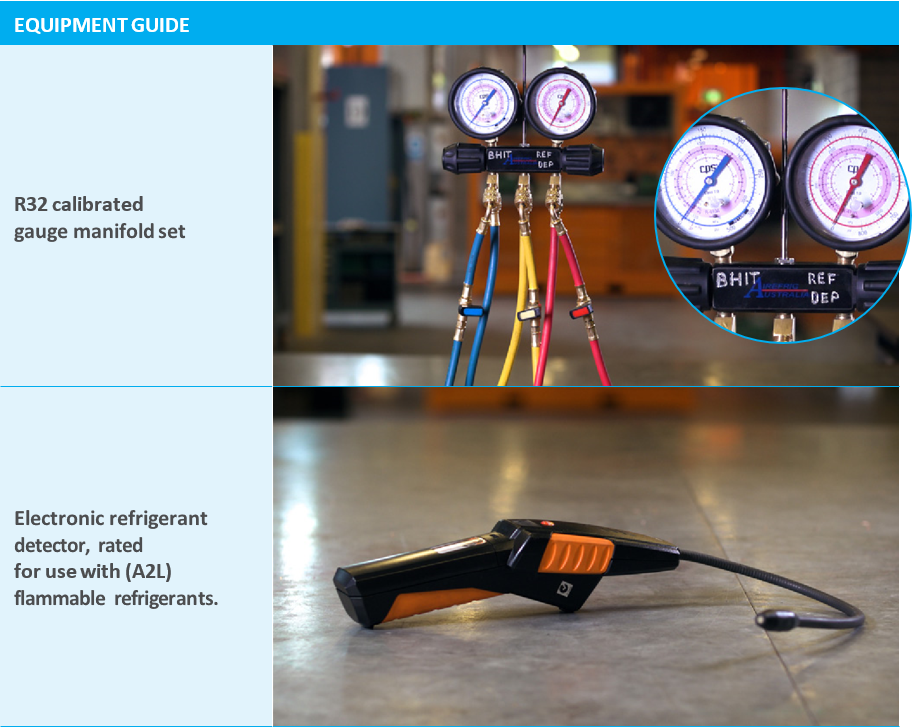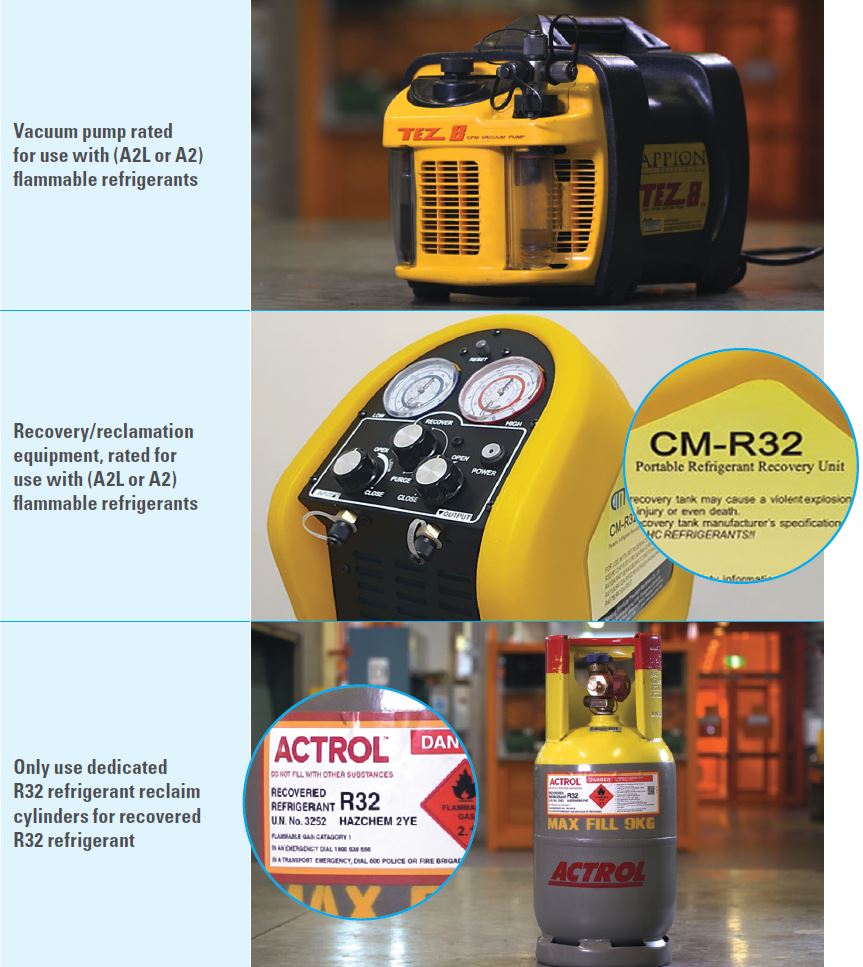Australian Standard AS/NZS ISO 817:2016 classifies R32 as A2L lower flammability. Technicians need to take the relevant safety measures for the correct transport, storage and handling of a flammable gas. This includes ensuring that the gas is not exposed to open flames or other ignition sources. Toxic substances like hydrogen fluoride and carbon dioxide are created when R32, like all fluorinated refrigerants, is burnt. Asphyxiation and freeze burns are also a risk.
For transportation purposes, R32 is classified as a dangerous goods class 2.1 flammable gas under the Australian Dangerous Goods Code and therefore requires additional handling and storage safeguards compared to class 2.2 non-flammable gases.
Safety issues to be aware of:
- For installation of split system air conditioners concentration levels are important, especially with ducted systems. The smallest unventilated room the system serves dictates the maximum refrigerant charge that can be safely installed.
- Ducted indoor units pose an additional hazard because the indoor unit is generally in a confined space with only a small amount of room between the indoor unit and the rafters. If a gas leak occurs within the indoor unit the refrigerant can pool and become trapped, reaching flammable concentration levels.
- Dry nitrogen should always be used when brazing to displace the oxygen and prevent oxidisation on the inside of the pipework. This procedure is important as it is also required to displace the residual refrigerant and prevent concentration levels conducive to ignition.
Further Information
Manufacturers and suppliers are required to include additional safety information in the installation and service manuals for air conditioners using a flammable refrigerant. Technicians should follow these instructions.
The Flammable Refrigerants Safety Guide developed by the Australian Institute of Refrigeration, Air Conditioning and Heating outlines the occupational health and safety risks associated with refrigeration and air conditioning equipment and systems that use flammable refrigerants. Module 8 covers cylinder handling, storage and transport. Refer to the updated 2018 edition.
Check with the relevant state-based WorkSafe agencies and refer to the relevant material safety data sheets available from refrigerant wholesalers for specific safeguards when handling R32.





